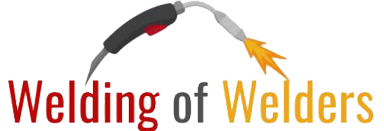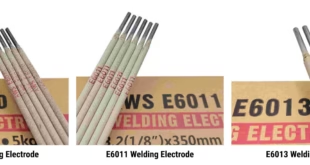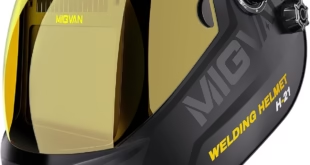AWS A5.17 Submerged Arc Welding Consumables – A Complete Guide
What is AWS A5.17?
AWS A5.17 is an official specification from the American Welding Society. It provides detailed standards for carbon steel electrodes and fluxes used in the Submerged Arc Welding (SAW) process. When a manufacturer wants their consumables (like welding wires and flux powders) to be trusted, certified, and accepted worldwide, they must comply with AWS A5.17.
Why This Specification Matters in SAW?
In welding, consistency is everything. If you use consumables that don’t meet a known standard, you could end up with weak welds, cracks, inclusions, or structural failures. That’s where AWS A5.17 comes in. It ensures:
- Weld metal properties meet minimum standards
- Consumables are safe and predictable
- You can qualify welding procedures faster
- Your welds are acceptable for code-based projects (like ASME, API, etc.)

Quick Refresher on SAW Process
Submerged Arc Welding (SAW) is a process where:
- An arc is struck between a consumable electrode (wire) and the base metal.
- The arc is completely covered (submerged) under a layer of granular flux.
- This flux melts to protect the weld pool, producing slag that helps clean the weld and prevent contamination.
SAW is known for:
- Deep penetration
- High deposition rates
- Minimal spatter
- Clean-looking welds
Role of Consumables in SAW
Here’s where things get spicy—consumables are the heart of SAW. There are two primary consumables:
- The electrode (wire) – feeds continuously into the weld pool.
- The flux – covers the arc, melts, and forms slag on top.
Both of these directly affect:
- Weld metal composition
- Weld strength and ductility
- Slag removal
- Arc stability
Classification of Consumables Under AWS A5.17
Electrodes (Bare and Composite)
AWS A5.17 classifies carbon steel electrodes into types like:
- EL12
- EM12
- EM12K
- EH14, and so on.
Let’s break that down:
- Bare Electrodes: Usually solid wires without any coating.
- Composite Electrodes: Wires that may have multiple alloying elements or unique properties.
Fluxes (Agglomerated, Bonded, Fused)
Flux is just as important as the wire. There are three types:
Fused Flux:
- Made by melting and solidifying.
- Very stable and non-hygroscopic.
- Doesn’t require binders.
Bonded Flux:
- Made by mixing dry materials with binders like sodium silicate.
- Can contain metallic alloys.
- Easily customized.
Agglomerated Flux:
- Similar to bonded but uses ceramic binders.
- Offers alloying flexibility.
- Often used for special applications.
Combined Electrode-Flux Designations
Here’s where AWS A5.17 really shines: it qualifies wire + flux as a pair, not just individually.
Why? Because how they perform together matters more than how they perform alone. For example:
- EM12K with one flux might produce 70 ksi tensile strength.
- With another flux, it might hit 90 ksi.
Electrode Classification Explained
How to Read Electrode Designations (Example: EM12K)
These designations tell a story. Let’s decode EM12K:
E = Electrode
M = Medium Manganese
12 = Approximate level of carbon/manganese
K = Added deoxidizers (usually Silicon and Aluminum)
Now compare it to EL12, which has lower manganese and fewer deoxidizers. It’s all about what alloying elements are in the wire, and how they affect:
- Weld fluidity
- Crack resistance
- Metal toughness
Chemical Composition Requirements
Each electrode has strict chemical limits on:
- Carbon (C)
- Manganese (Mn)
- Silicon (Si)
- Sulfur (S)
- Phosphorus (P)
Flux Classification and Performance
How Flux Type Impacts Weld Quality
Flux isn’t just a covering—it’s a chemical shield and purifier. It:
- Protects the molten weld pool
- Cleans impurities
- Controls cooling rate
- Shapes the weld bead
The type of flux affects:
- Slag detachability
- Weld color and finish
- Porosity
- Hardness and ductility
Common Flux Characteristics
Fluxes often contain:
- Deoxidizers like Mn, Si, Al
- Alloying elements like Cr, Mo, Ni
- Oxides and minerals that create slag
F-Number and Diffusible Hydrogen Considerations
AWS assigns F-numbers to each electrode/flux type to simplify procedure qualification. Lower F-number means easier weldability.
Hydrogen content is also tested (measured in ml/100g). High hydrogen can lead to:
- Cracking
- Brittle welds
- Delayed failure
Matching Electrodes and Fluxes
How to Pair for Best Mechanical Properties
Not every wire goes with every flux. For example:
- EM12K + F7A2-EM12K flux might give you 70ksi tensile strength.
- EM12K + active flux might bump that to 90ksi.
So always:
- Refer to manufacturer’s data sheet
- Use pre-qualified combinations from AWS
- Perform your own WPS/PQR testing
Application-Specific Matching
Different applications need different properties:
- Bridges – high strength, low hydrogen
- Pipelines – good ductility, low temp impact resistance
- Shipbuilding – high deposition, fast welding
Mechanical Properties and Testing
AWS Required Mechanical Properties
Every qualified electrode-flux combo must meet:
- Tensile strength (usually 70,000+ psi)
- Yield strength
- Elongation %
- CVN impact values
These values prove the weld can handle:
- Pulling
- Bending
- Cold temperature stress
Test Procedures for AWS A5.17 Approval
To get AWS approval, manufacturers must:
- Run test welds under strict parameters
- Cut test coupons
- Perform tensile and bend tests
- Submit results to AWS or 3rd-party labs
Applications of A5.17 Consumables
Industries That Rely on SAW
Submerged Arc Welding using A5.17 consumables is common in:
- Oil & gas pipelines
- Shipyards
- Heavy machinery
- Boiler and tank fabrication
- Bridge and highway projects
Common Projects
Some real-life examples:
- Long seam welding on pressure vessels
- Girth welding on pipeline sections
- Column and boom welding for beams
- Automated plate welding in ship hulls
Storage and Handling of SAW Consumables
Electrode Storage Guidelines
Electrodes should be stored:
- In sealed containers
- Away from moisture
- At stable temperatures
Moisture = hydrogen pickup = cracks in welds!
Flux Storage & Reclamation
Keep flux:
- In airtight hoppers
- Dry and clean
- Away from metal chips, oil, or moisture
Reclaimed flux should be:
- Screened for slag or wire pieces
- Rebaked if necessary
Weld Quality and Consistency
Standardization Across Industries
AWS A5.17 allows:
- Global acceptance
- Consistent performance
- Simplified training and inspection
Compliance and Traceability
All A5.17-compliant products must:
- Be labeled properly
- Come with heat/batch numbers
- Provide Material Test Certificates (MTCs)
Challenges and Limitations
Flux Pick-Up and Slag Inclusion
If the flux is too thick or poorly matched, it can:
- Cause slag entrapment
- Lead to incomplete fusion
- Affect bead shape
Limitations in Positional Welding
SAW is mostly limited to:
- Flat and horizontal welds
- Not ideal for vertical or overhead positions
FAQs
What’s the difference between EM12K and EL12?
EM12K has added silicon and manganese—gives better strength and arc stability. EL12 is simpler, cheaper, but lower performing.
Can I reuse flux in SAW?
Yes, but only if it’s screened, clean, and dry. Reuse dirty or moist flux, and you’re asking for weld problems.
Is AWS A5.17 suitable for stainless steel welding?
Nope! A5.17 is only for carbon steel. For stainless, check AWS A5.9 or A5.22.
How do I know if my electrode-flux combo is compliant?
Check the product data sheet or the AWS classification code printed on the box. They’ll list all approved combinations.
Can SAW consumables be used outdoors?
Not really. SAW works best indoors. Flux absorbs moisture easily, and wind can blow it off before it melts properly.
Conclusion
AWS A5.17 might look like just another spec on paper, but in reality, it’s the guardian of weld quality in SAW applications. Whether you’re building a bridge, a ship, or a storage tank, these consumables must perform reliably, weld after weld. From classification to storage, flux pairing to hydrogen control—every detail matters.
 Welding of Welders All about Welding and Welders
Welding of Welders All about Welding and Welders



